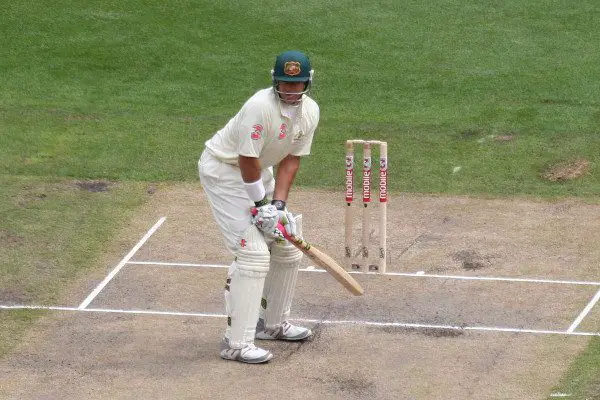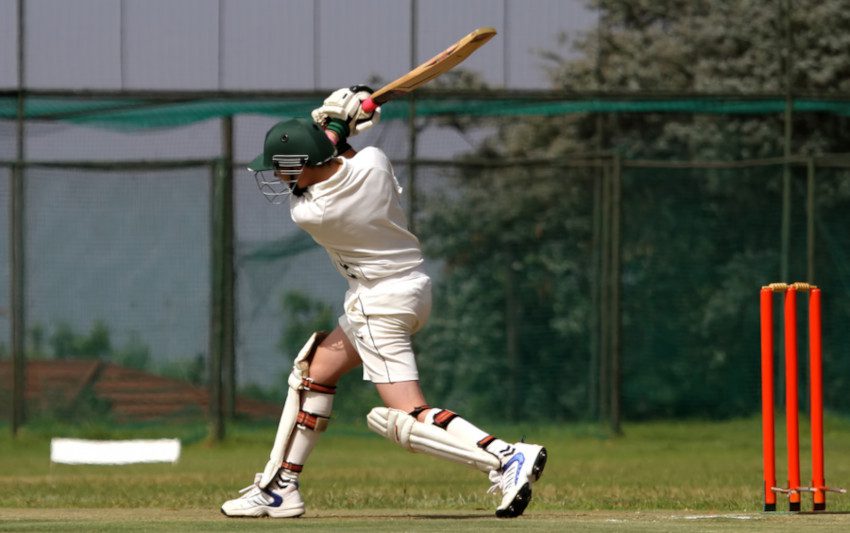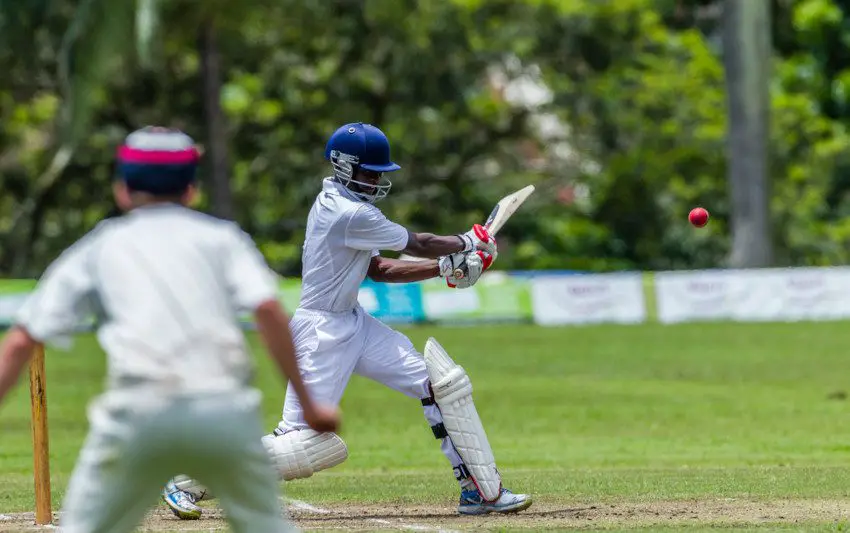Table of Contents
This is a brief but comprehensive guide about the approach to playing cricket as a left handed batsman. In the round up I’ll discuss equipment, stance and any potential advantages and disadvantages to being left handed.
If you’re just starting out in cricket and you are a natural left-hander, you’re in very good company. At the end of this article I’ll mention some of the best lefties in the game and they include a man who has made the highest scores in both test and first class cricket.
Batting Tips for Left-Handed Batsmen
1: Buy Left-Handed Equipment
While cricket bats can be used by both left and right handed players, protective equipment will be different. When making a purchase, note that there is specific left handed gear in relation to.
- Batting Gloves
- Pads (leg guards)
- Thigh Pads

If you are left handed, please make sure you are buying the correct piece of equipment.
2: How to Grip the Bat for Left Handers
The right hand holds the bat at the top with the left hand underneath. The right hand provides the support needed to grip the bat effectively while the left hand offers the control to the batter when playing a shot.
3: Don’t get out LBW
A right handed bowler may have an advantage when delivering to a left handed batsman because of the angle. Several young left handers may find that they get out LBW quite often so it’s a case of practising, watching the ball closely and not overbalancing when playing a shot.
Note too that a batsman cannot be given out LBW if the ball pitches outside leg stump and this may be an advantage to left handers.
4: Left-Handed Batting Stance
The left handed batter stands sideways in the crease to face the ball. Their left foot will be at the back with the right foot closest to the bowler and they will be facing the point position, square of the wicket.
5: Beware the Danger Area
The danger area is commonly referred to as the rough: It’s trickier for left handers as the rough is caused by a right handed bowler’s follow through and it will be located outside of the lefty’s off stump.
To negate the danger area, coaches recommend that left handers stand 1-2 feet outside of the crease to faster bowlers and that they use their feet more to the spinners.
6: Take Advantage of Left-Handed Shots
The natural hitting area for the majority of left handers is through cover and mid wicket. Opposing captains should know this and set a field accordingly.
All batsmen should play to their strengths but it may help left handers to practise shots that aren’t necessarily natural such as the pull or the off drive.

Advantages of Left-Handed Batsmen in Cricket
Is Batting Left-Handed an Advantage?
There are some definite advantages to batting left handed: The most common form of bowling is right arm over the wicket and this makes it difficult to be out LBW. Studies have also shown that it may be better for right handed players to bat with a left hander’s stance.
The scientists suggest that a left hander may have greater spatial awareness and that their reaction time is quicker than their right handed counterparts. This is because of their comparison with right brain to left brain wiring.
In cricketing terms, this simply means that they can make decisions more quickly and react quicker to a delivery. If this is true, then it’s a great advantage when facing a swinging ball or one that seams off the pitch.
Certain bowlers may also find it hard to adjust to left handed batsmen. This can be particularly true when there is a right hand / left hand combination at the wicket and they continue to rotate the strike. It can disrupt a bowler’s length and rhythm and the batsmen are ready to take advantage.
Of course, this isn’t always the case: In the 2019 Ashes Series, England’s Stuart Broad worked out exactly where to bowl to Australia’s David Warner and the left handed batter had a terrible series as a result.
Opinion is naturally divided on the question but it seems that the advantages of being a left hander may well outweigh the disadvantages.
Are Left Handed Batsmen Better than Right Handed?
This is, naturally, a topic that’s open to discussion but it’s interesting to note that left handers tend to be over-represented in international cricket. Studies have shown that around 10% to 13% of the global population is left handed but most top sides will have more than one lefty in their team.
That might suggest that left handed batsmen are better than right handers but it’s a topic open for discussion.


